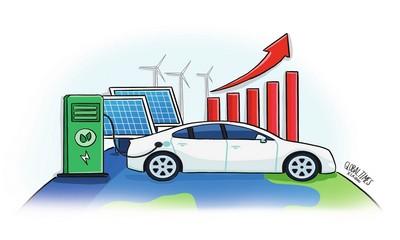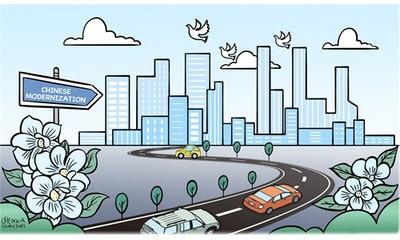
China’s development refutes US logic fallacies rhetoric
S L Kanthan
The progress and development of the Global South – about 85 percent of the world’s population – should be celebrated, not hindered. China’s miraculous economic success over the last 40 years is an inspiration for the people of other developing nations.
It is unreasonable for the US to suppress China’s development, seize resources and prevent the Chinese people from living a better life. Moreover, with the progress in science and technology, we can see that the Earth has enough resources to enable the Chinese people to live a good life.
While there are veritable concerns about economic growth, including pollution, deforestation, water depletion, China has shown the world how those problems can be addressed. For example, PM2.5 air pollution levels in Beijing fell by a staggering 60 percent between 2013 and 2023. In China, renewable energy now accounts for 56 percent of installed power capacity.
China is not only improving itself. It is helping the entire world through its leadership in technology and manufacturing of green energy products such as solar panels and affordable electric cars. Thus, China’s development is improving the environment around the world, contrary to what former US president Barack Obama once said – with a straight face – that Chinese people should not enjoy the same standard of living as Americans and Australians because the planet can’t sustain it.

Americans are very innovative. They come up with countless and creative narratives to contain China, even if the logic is deeply flawed. Obama’s remarks at the time were not only outdated in thinking that “development is the privilege of a few countries,” but have also been overturned by facts today. Such a mindset underpins the trade war, tech war and propaganda war waged by the US against China over the last few years.
The complaints by the US are insincere. The US’ energy consumption per capita is 10 times larger than that of India, so why don’t US leaders talk about modifying their standard of living to save the planet? Why don’t Americans drive small cars rather than pickup trucks and SUVs in order to reduce global emissions? Why doesn’t the US plant billions of trees like China does?
The bigger truth is that the US is simply trying to sabotage its economic and tech competitor. Thus, whatever the facts might be, the conclusion is always simple: China bad!
If China is poor, then it’s the fault of the ruling party and the government; if China is rich, it’s a threat to the US.
If China does not have successful tech companies, it’s because China does not have glorious free market capitalism like the US. If Chinese tech companies are successful, they are a threat to US national security.
If China does not help developing nations, it’s not being a good stakeholder; if China builds infrastructure in Africa, it’s a “debt trap.”
If the US has a trade deficit with China, it’s because China does not follow the principles of free trade; but if China wants to buy semiconductor chips or equipment, the US would not allow it.
If Google, Netflix, Amazon, Nvidia are successful all over the world, it’s because of American ingenuity; if China is the world’s largest exporter of cars, it’s because of “overcapacity” of Chinese factories.
The hypocrisy and logical fallacies are absurd. One day, the American (and Western) media claim that China is collapsing and has no future. The next day, the same media hype about China taking over the world.
In 2014, the Harvard Business Review wrote an article titled, “Why China can’t innovate.” This trope is still repeated today. However, Biden’s commerce secretary Gina Raimondo said in an interview in 2021 that the US needs to work with Europe to slow down China’s innovation.
And that’s what the tariffs, sanctions, decoupling and warmongering are all about – kneecap China so that the US can continue to enjoy its hegemony.
Once upon a time, 20 years ago, American corporate elites were extolling the virtues of “Chimerica” – China + America. But that was when China’s GDP was much smaller, it was not ahead of the US in patents or research papers, and Chinese companies such as Huawei, BYD, CATL, DJI, ByteDance, Xiaomi, Shein and DeepSeek did not compete with Western companies.
Now, surprised and shocked by China’s rapid progress and unable to compete, the US is trying to disrupt China’s peaceful rise.
However, it’s too late. China has reached the economic and geopolitical escape velocity. And its resolve in the US-led tariff war is simply a reflection of Chinese people defending their sovereignty and right to development, for themselves and for the world.
The writer is a geopolitical analyst, columnist, blogger and podcaster
